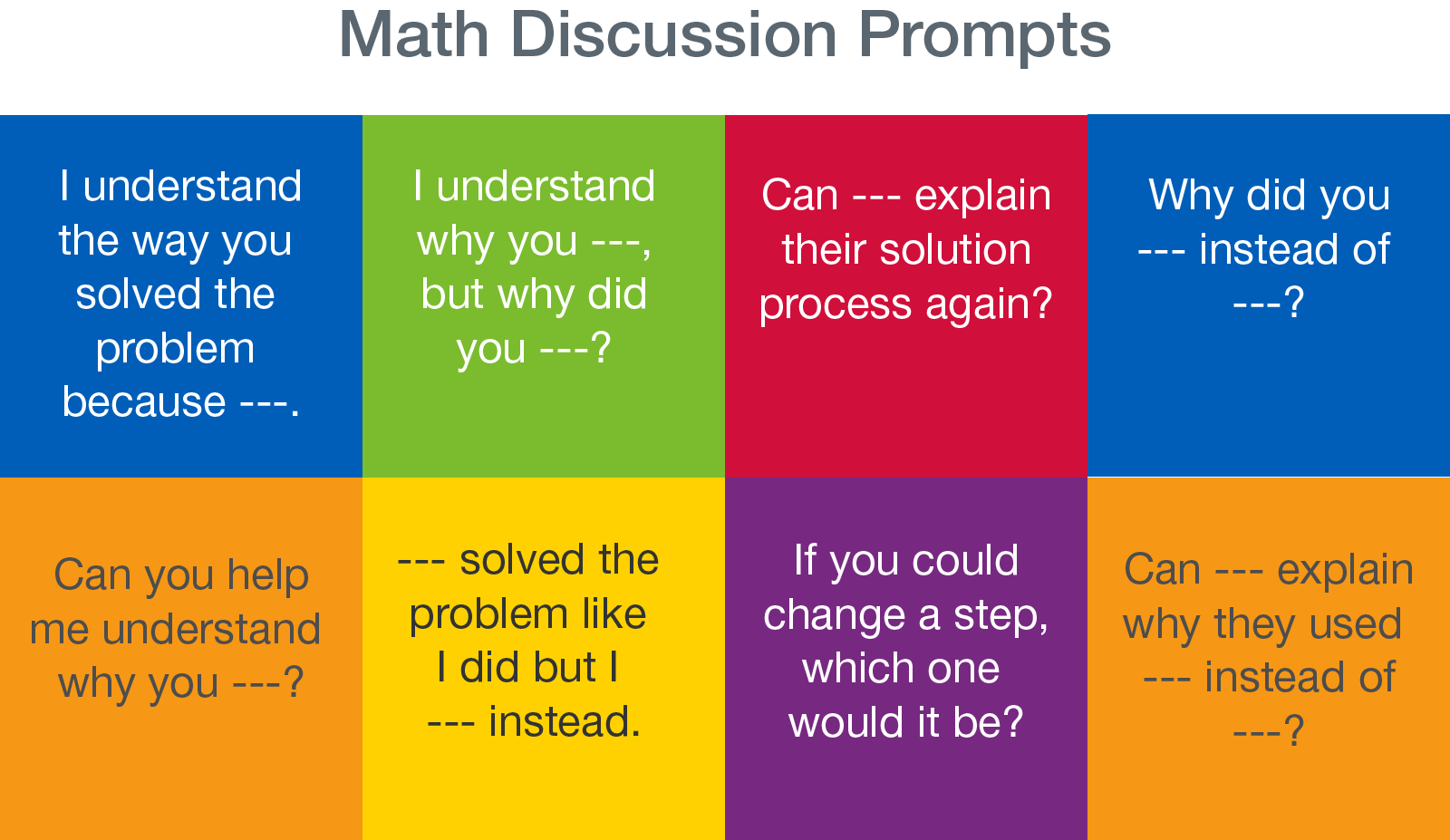
Talking about math is more than merely describing the steps in solving a problem (“First, add the ones, then the tens. If you need to regroup, do that.”). Math discussions are focused on the process of working towards a solution, understanding how others’ think about that process, and developing a plan for similar problems. Students should be pushed to think beyond an explanation of steps to an explanation of process, including making errors and how those were resolved. They should also be encouraged to use different methods and tools when solving a problem, then sharing these ideas with others to build a bank of strategies. In a physical classroom, this can be challenging so how can it be done while distance teaching? More than that, how can it be done successfully?
The Standards for Mathematical Practice describe eight expectations for meaningful, targeted, and vigorous math learning.
- Make sense of problems and persevere in solving them
- Reason abstractly and quantitatively
- Construct viable arguments and critique the reasoning of others
- Model with mathematics
- Use appropriate tools strategically
- Attend to precision
- Look for and make use of structure
- Look for and express regularity in repeated reasoning
The goal is that as students progress from primary through secondary grades, they become more comfortable using and talking about mathematics concepts and skills including how they are applied outside of math. Because of increasing emphasis on STEM/STEAM learning and 21st century skills, having students talk about their learning is vital. In their conversations, mathematical language is expected for all students, even those learning English. The more that mathematical language is used in direct instruction and modeled in math discussions, the more students will become comfortable and confident in using this language in speaking and writing.
Below are suggestions for strengthening math thinking and incorporating math discussions, even if distance teaching. As you review the list, compare with the SMP standards:
- Establish norms for how discussions will take place. This includes active and respectful listening as others share ideas with the expectation that they will provide feedback. In the beginning, teachers will need to model these norms, including “think alouds” of possible feedback (“I’m wondering about why you decided to add instead of multiply?”).
- Pose meaningful problems that are relevant to students. As you get to know your students, their prior knowledge, and experiences, develop problems that students can identify with and are applicable to real-life. Problems should also include multiple solution strategies that fosters reasoning on possible entry points.
- Make available a list of discussion prompts to start math discussions (partner, small group, whole class). As students become more comfortable with giving and receiving feedback, the class can add prompts to the list. Make the list accessible in the learning platform being used for reference. This list can also include questions about others’ work.

- Provide opportunities for partner and/or small group talk. In a classroom, this is easily done by having students ‘turn and talk.’ In a virtual classroom, use breakout rooms and move from room to room to observe conversation. Students can share initial strategies and plans on their attempts at solving a problem. After hearing what peers have to say, students can choose to incorporate the ideas shared. This will help them better understand their own thinking and grow as a “math thinker.”
- Require visuals in explanations. Visuals can include models, pictures, and videos. An alternative is to have students record themselves explaining a solution and posting it to the class LMS. Classmates can provide feedback via commenting, using their discussion prompts list as a guide. Review the comments and select a few for discussion in the next class virtual session.
- Design assessments that call for creative and critical thinking. Most students have ample experiences with multiple choice and short answer style assessments. Start off simply with a problem with identifiable errors in the solution process. With the whole class and/or smaller groups, discuss the errors and how they could have been made. Then have students do the same type of activity in breakout sessions. Or have students write problems targeting a newly learned concept or skill. Review the problems, assign, then have students share solutions.
For most, using video conferencing or chat applications have become second nature but reviewing discussion expectations is still an important practice (mute while someone is talking, actively listen, raise hand to share an idea). Also, require more from discussions like detailed feedback and questions, as the complexity of the problems increases. Push students to incorporate alternative strategies without overwhelming them with too many strategy options. Prioritize what and how you will present strategies when you plan and as you observe how students are grasping new skills.
Distance teaching necessitates, in many cases, small group virtual lesson sessions. This can help target skills for groups of learners, while providing them the time to take in and process new learning in a smaller, safer “environment.” Discussions are also an “equalizer” of sorts since the technical language of mathematics is required, versus the nuances and rules of English. The opportunity for strengthening critical thinking and communication skills is great in math discussions. The time invested in thoughtful planning will bring positive learning outcomes.
To learn about what Boxlight has to offer for enhanced learning collaboration, including the new MimioConnect® blended learning platform, go to mimio.boxlight.com.


